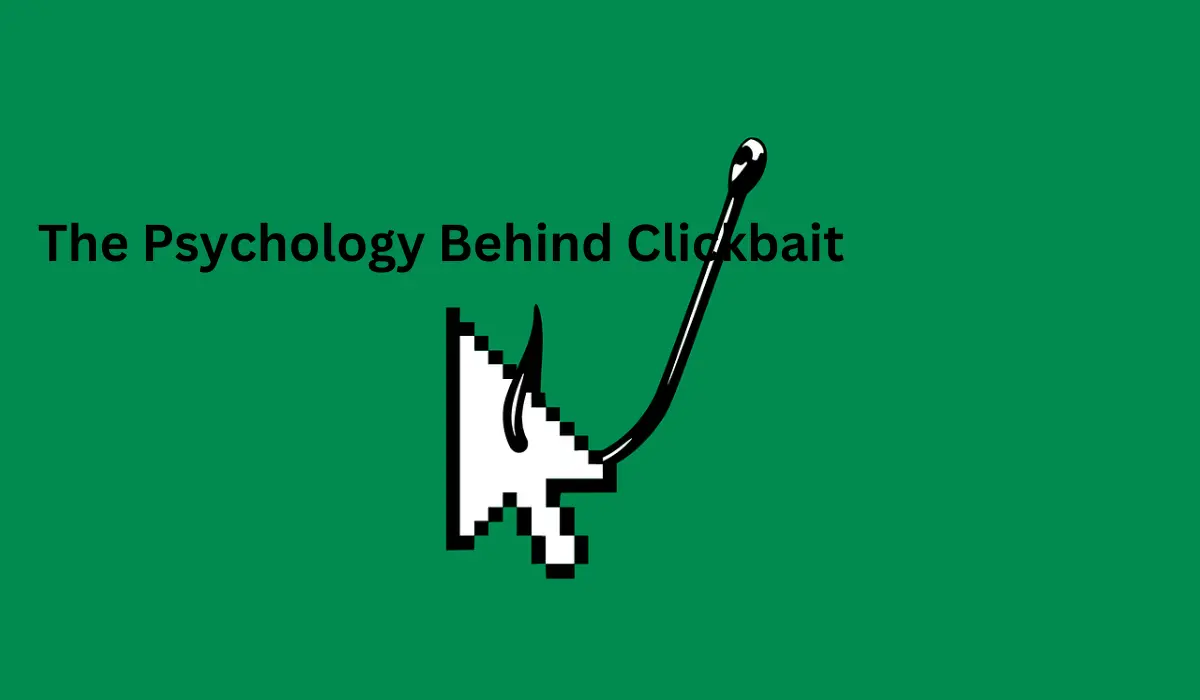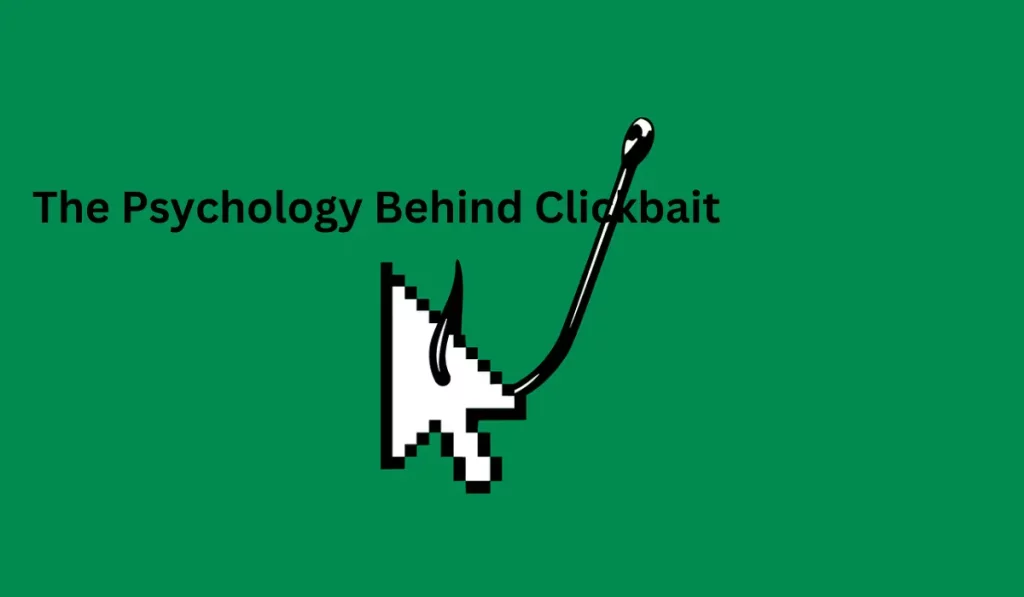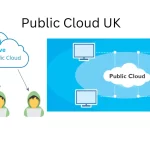Those enticing yet elusive headlines that beckon internet users to click have become rampant in today’s digital landscape. Along with tempting images and captivating teasers, those intriguing headlines will make them curious enough to read what the articles have to say — only to leave readers feeling somewhat deceived by the content.
This strategy is known as clickbait, sensationalized words that content creators use to grab readers’ attention and persuade them to visit their websites, videos, or articles. Understanding this online phenomenon is crucial to navigating the overwhelming sea of content.
This article will explore the psychology behind clickbait by defining its history and understanding the factors that make it an effective tool in attracting internet users. It will also discuss the effects of this online force and how to use it responsibly when engaging with audiences.
A Quick History of Clickbait
As mentioned, clickbait is a form of exaggerated headline used to attract visitors and drive traffic to a website. While it is often associated with online media, this type of content is considered a derivative of yellow journalism. This term is defined as using overdramatized headlines while presenting little to no facts in the article.
Both of these content elements are characterized by their ability to exploit human curiosity, emotions, and cognitive biases to generate high reader engagement. Clickbait and yellow journalism also fall short of delivering meaningful or relevant content, leaving readers feeling disappointed or deceived.
Types of clickbait strategies
Clickbait employs various headline types and strategies to take advantage of human psychology and entice users into clicking on links. These tactics are:
Sensationalism and exaggeration
This type of clickbait relies on overplayed claims to pique online users’ curiosity and stimulate emotion. Headlines like this exaggerate and twist the truth to make them feel a sense of urgency, excitement, or shock. Evoking these emotions eventually prompts them to visit the article for fear of missing out on something extraordinary or shocking.
Emotional triggers and appeals
Similar to headlines that employ sensationalism and exaggeration, this type of clickbait also targets readers’ emotions and elicits strong feelings like happiness, anger, fear, or empathy to drive engagement. Emotional clickbait often uses heartwarming, heartbreaking, or shocking stories, images, or videos, playing on users’ empathy, outrage, or desire for emotional stimulation
Curiosity gaps and cliffhangers
Clickbaits that use curiosity gaps intentionally leave out critical information to create a void that triggers users’ curiosity. It teases just enough to make them click on the article and fill in the missing details. Similarly, cliffhanger clickbait hints at an intriguing story or revelation without providing closure, which then compels readers to click and read the story to find out more about it.
What Makes Clickbait Effective
The reason clickbait works is because of one thing: its ability to tap into several psychological factors that influence human behavior and decision-making. Among these factors is the desire to learn or know something.
Being curious is hardwired into human nature, which is why clickbait — with its dubious promise of giving this compelling information — is so effective in making users click on that article with that sensationalized headline.
Cognitive bias is another factor that clickbait takes advantage of to drive high click-through rates. It does so by capitalizing on the inherent mental shortcuts and patterns of thinking that the brain uses to process information quickly.
For instance, a clickbait that aims to exploit one’s confirmation bias is framed in a way that aligns with their perspective. That’s because people tend to seek information that confirms their preexisting beliefs. So, a headline that reinforces these ideas is likely to generate engagement.
What’s more, clickbait leverages negative emotions. This exploitation is evident in fear-inducing or controversial headlines to trigger feelings of anger or anxiety, which then prompt readers to search for information that will either justify their outrage or alleviate their fears.
However, this online phenomenon can also make use of positive emotions to drive engagement. For example, a clickbait that features emotionally charged stories or images elicits feelings of empathy and compassion, encouraging users to click to show support or understanding. It can also stimulate excitement by promising exclusive or upcoming information to prompt them to click on the accompanying link.
By skillfully manipulating these emotional triggers, clickbait content creators seek to engage audiences on a deeper emotional level and increase the likelihood of click-throughs and shares.
Effects of Clickbait
Clickbait may only drive short-term engagement, but its effects go beyond poking one’s curiosity and getting clicks. It can have a long-lasting impact on user behavior, online platforms, and society as a whole.
Impact on user behavior
The way clickbait exploits emotions and cognitive biases can foster short attention spans, which then reinforces skimming habits instead of in-depth reading. Frequent exposure to clickbait may also lead to desensitization that can reduce people’s ability to discern reliable sources from sensationalized or misleading content.
Influence on Online platforms
Due to its high click-through rates and engagement, clickbait content often gains favor with online media platforms. This causes digital platforms to prioritize clickbait over more substantive content to maximize user interaction. It can potentially lead to a reduction in the visibility of high-quality and informative material. This effect also pressures online creators to resort to clickbait tactics so they can maintain or increase their reach.
Negative effects on society
The effects of clickbait are not sustained in the digital landscape. Misleading headlines and deceptive content can undermine the trust in media sources and contribute to the spread of misinformation. Constant exposure to sensationalized or emotionally manipulative clickbait can also affect people’s mental well-being, leading to heightened anxiety, fear, or desensitization to important issues.
Clickbait’s effects are complex and far-reaching. While it may initially serve as a tool for generating engagement, its long-term consequences highlight the importance of detecting clickbait and using it responsibly to foster a more reliable digital content landscape.
Using Clickbait Responsibly
Responsible usage of clickbait is crucial to create a more authentic online ecosystem founded on factual information. Doing so can address ethical challenges and reduce the risk of misleading audiences. Here are some strategies for using clickbait responsibly to maintain credibility, authenticity, and user trust.
Acknowledging ethical concerns and boundaries
Responsible employment of clickbait begins with an awareness of ethical concerns and boundaries. Creators must prioritize honesty and transparency while avoiding misleading or false claims in their headlines and content. By adhering to ethical guidelines and staying true to the content’s value, content curators can foster a more trustworthy and positive relationship with their audience.
Balancing creativity and curiosity without misleading
Creativity is a powerful tool in crafting compelling headlines, but responsible clickbait strikes a delicate balance between creativity and avoiding misleading tactics. That means online creators must create intriguing and curiosity-driven headlines that provide an honest preview of what they can expect upon clicking. Simply put, they must avoid exaggerations and sensationalism to ensure that users’ expectations align with the actual content.
Incorporating responsible clickbait elements
Creators can still incorporate certain clickbait elements that engage users while maintaining the integrity of their content. For instance, they can responsibly leverage readers’ curiosity by providing valuable and meaningful information behind the click. Doing so ensures that the users are rewarded for their engagement. They can also ethically use emotional appeal by considering the context and impact of emotional triggers.
Conclusion
As the digital landscape continues to evolve, using clickbait responsibly becomes a moral imperative for content creators and online platforms. Its allure can be traced back to its ability to take advantage of psychological factors that affect human behavior. When used recklessly, clickbait’s pervasive nature can lead to negative consequences that affect individual users and society.
However, when used responsibly, clickbait can help content creators capture users’ curiosity and interest while delivering valuable and authentic content. Embracing the ethical use of this attention-grabbing content can lead to a more trustworthy and enriching digital environment.
OS Digital World is a trusted online marketing partner that can help you drive traffic and create a more authentic user experience on your website. It offers SEO solutions that you can custom-fit to meet the needs of your website and reach your target audience. Book a consultation now to know more about its services.
Read More Articles





